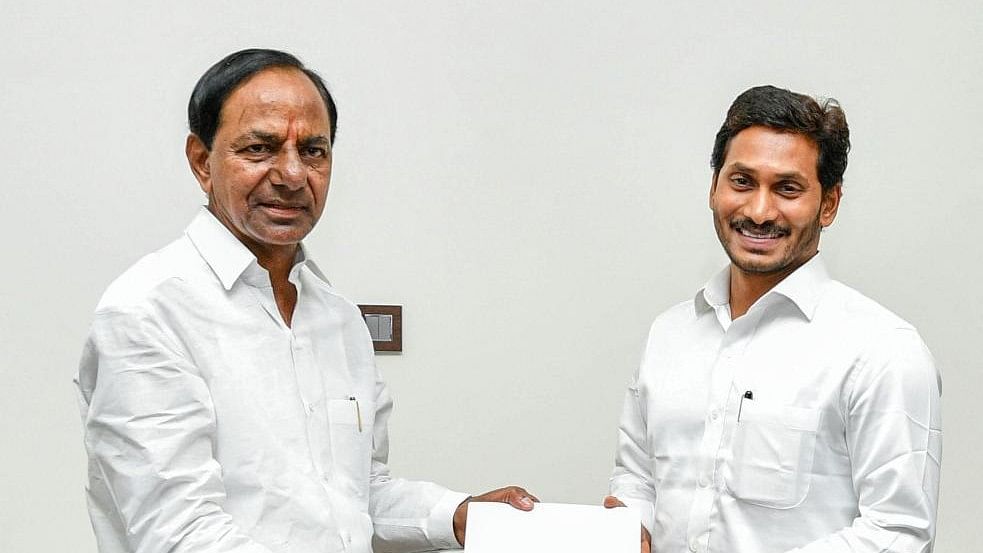
The then Telangana Chief Minister K Chandrasekhar Rao with Andhra Pradesh CM YS Jaganmohan Reddy during the inauguration of Kaleshwaram Project.
Credit: PTI Photo
Hyderabad: The CAG report that was tabled by the state government in the assembly on Thursday said the flagship mega irrigation project of the BRS government – Kaleshwaram Project - is economically unviable and meeting the high operational expenditure in the future will be a challenge.
The report also said the possibility of undue benefit of at least Rs 2,684.73 crore to the contractors for the supply and commissioning of pumps, motors etc., cannot be ruled out.
The performance audit by CAG covered the events between April 2013 and March 2022.
"Even after six years since re-engineering and incurring an expenditure of Rs 86,788.06 crore, the project has been able to create only 40,288 acres of new Command Area (CA) as against the targeted CA of 18.26 lakh acres. The project has not been able to provide water for drinking/industrial purposes as intended. Though the department now expects the project to be completed by June 2024, with the present status of works and the volume of work yet to be done, completion of all works and achievement of full benefits contemplated under the project is likely to take many more years," said the CAG report.
"The project cost is now likely to exceed Rs 1,47,427.41 crore as against the cost of Rs 81,911.01 crore projected to the CWC. Further, the calculation of the returns on an inflated basis has resulted in the Benefit-Cost Ratio (BCR) falling below the project viability benchmark of ‘one’ (1.00). Even with the understated project cost of Rs 81,911.01 crore, BCR works out to 0.75. Considering the latest likely project cost of Rs 1,47,427.41 crore, the BCR works out to 0.52. This means that every rupee spent on the project would yield only 52 paise. It indicates that the project was, ab-initio, economically unviable,” pointed out CAG.
To finance the project, the then-state government depended mainly on the off-budget borrowings raised by the Kaleshwaram Irrigation Project Corporation Ltd. (KIPCL) based on the guarantees given by the government. As much as 72.82% of the expenditure incurred since 2016-17 on the project was met from off-budget borrowings. Servicing this debt and meeting the high operational expenditure of the project in the coming years will be a challenge to the state government.